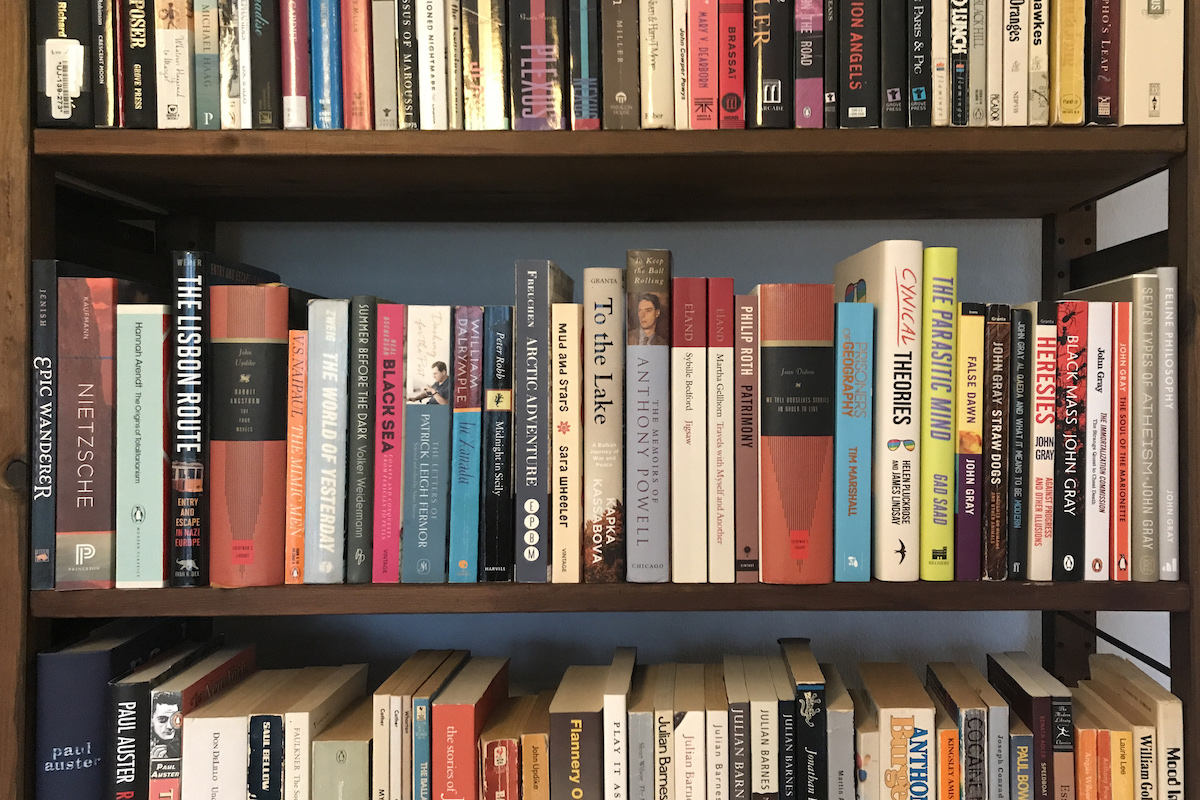
Do you have a book addiction? Well I’m here to make it worse.
I love a good reading list like a hobo loves Aqua Velva.
As the year comes to a close, and as dark Berlin huddles beneath a pandemic sky, I’d like to take a moment to share my top reads from the past twelve months.
Each book made my list because it was memorable, important, or just thoroughly enjoyable. And each is worth your time. I hope you’ll track them down.
I had to add a new category this year, because so many memoirs made my list. You’ll also find the usual general nonfiction, travel literature, history and fiction — so scroll down if the books near the top don’t tickle your reading fancy.
Be warned: this year’s list is long. But what the hell else was there to do in lockdown?
Okay, first up, my Top Pick of the Year.
It isn’t a single book this time, but a chunk of an oeuvre… (bet you never expected this to be a French lesson):
The work of John Gray [TOP PICK]
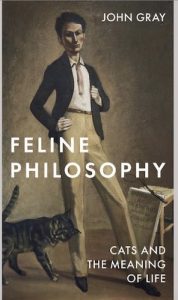
No, not the Mars-Venus self-help guru — the philosopher.
Gray’s most recent book was published in November. It’s called Feline Philosophy: Cats and the Meaning of Life.
Cat lovers will complain that it isn’t really about understanding cats at all — at least, it isn’t a guide to deep conversations with your feline friend. Gray is taking on the failures of philosophy to help humans deal with our essential loneliness as the only creature that is aware of its own inevitable death.
“Posing as a cure,” he writes, “philosophy is a symptom of the disorder it pretends to remedy.”
Throughout his entire body of work, Gray makes a convincing case that the notion of progress is an illusion; an inheritance of our Judeo-Christian worldview which sees life in linear terms, as movement towards some better state.
Scientific knowledge progresses but humanity does not. Rather than become more reasonable, more enlightened and more balanced over time, we seem to go in cycles, with the struggles of earlier eras returning and being played out against a background of increased scientific knowledge and technological power.
“The growth of knowledge enlarges what humans can do,” he writes. “It cannot reprieve them from being what they are.”
I plunged into Gray’s back catalog this year, and reread his more recent works.
Each of these books serves as an interesting expansion of his core themes through examining a specific thread of history.
In Black Mass, he takes on the apocalyptic religious thread at the heart of utopianism. While it may be obvious in Marxism and Nazism, he traces the same hopeless utopian line of thought through neo-liberalism, neo-conservatism, globalization, and radical Islam.
In The Immortalization Commission, he turns his lens on attempts to evade our inevitable, inescapable fate. “As secularization lost momentum,” he writes, “the search for scientific evidence of the afterlife has been largely abandoned; but the attempt to cheat death continues. The hope of life after death has been replaced by the faith that death can be defeated.”
False Dawn explores the unfettered global free market economy, its ideological assumptions, and the dangers it holds for social stability.
The Soul of the Marionette tackles the concept of human freedom. From the Gnosticism of Lawrence Durrell’s Avignon Quintet to Philip K. Dick, the films of Tarkovsky, and Jeremy Bentham’s Panopticon, there’s something startling to stop and think about on every page.
I also read Al Qaeda and What It Means to Be Modern, the essay collection Heresies: Against Progress and Other Illusions, and reread both Straw Dogs and Seven Types of Atheism (my top read of 2018).
I’ve included a link for each title I mentioned above in case you want to plunge into this brilliant body of work.
Okay, that was a longwinded start to the year’s best books. I’ll try to be more concise as we continue— but no guarantees.
In the category of general nonfiction…
Cynical Theories by Helen Pluckrose & James Lindsay
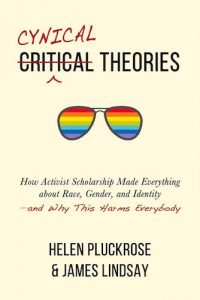
This book is highly recommended for anyone struggling to understand how making everything about race is supposed to put an end to racism — and how we went from judging people based on the content of their character rather than on uninteresting superficial inherited characteristics to assuming racism is present everywhere, always, forever. Your guide to understanding ‘woke’ cancel culture. One of the most important books I read all year. Check out the full review on my blog, and get your copy here.
The Parasitic Mind by Gad Saad
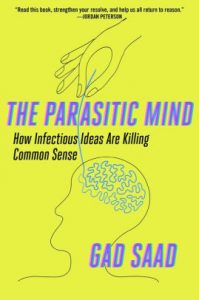
An easy-to-follow exploration of the ways in which the tyranny of political correctness and cancel culture identity politics stifles free thought, kills common sense, and leads to increasingly bizarre departures from reason by those desperate to signal their ‘progressive purity’. The author, Gad Saad, is a Montreal-based professor with a background in evolutionary psychology. His book is a great accompaniment to Cynical Theories, and The Madness of Crowds by Douglas Murray. Get your copy here.
Prisoners of Geography by Tim Marshall
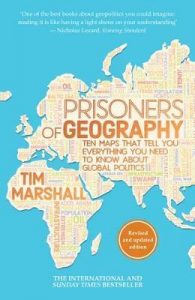
Marshall uses ten maps of crucial regions to explain the geo-political strategies of world powers. Why is Putin so obsessed with Crimea? Why was the US destined to become a global superpower? Why will Europe never be united? A thoroughly enjoyable exploration of the way national obsessions and strategic choices are influenced by accidents of geography. Get your copy here.
After Henry by Joan Didion
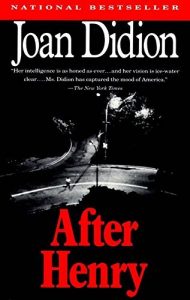
What a writer! The opening piece in this collection, ‘After Henry’, is about a close friend who had just died. It’s the sort of prose that makes me stop, set down the book and wonder why I should bother writing anything again. Didion does it so well in just five pages. Get your copy here.
In memoir…
Jigsaw by Sybille Bedford
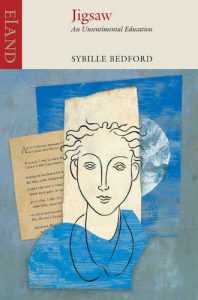
Sybille Bedford’s account of her life between the two world wars takes us from her childhood in a decaying German schloss after the divorce of her parents, to stints in Italy, and longer stays in London, punctuated by sojourns with her vibrant but erratic mother in the south of France.
Each period of her youth is densely observed, from her unconventional education in London, where she read her way through the greatest writers of the era, visiting the British Museum and National Gallery, and living as a latchkey kid in rented flats in her early teens, to her frequent journeys south. Her life in Sanary, at that time a small village in Mediterranean France, was lived among artists, exiles and intellectuals, including Aldous Huxley, who became a close family friend.
It’s a wonderful chronicle of a vanished age that, as the novelist John Fowles wrote, “will ravish connoisseurs of the lost.” Get your copy here.
Patrimony by Philip Roth
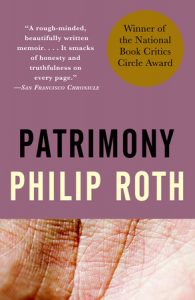
Philip Roth’s clear, unflinching memoir of his 86-year-old father’s struggle with the brain tumour that will kill him is more than the story of an illness. Roth explores his own relationship with this difficult but admirable man who struggled stubbornly to build a life for himself and his family, and in doing so, tells a tale of first generation Jewish immigrants to Newark and the world they inhabited.
In spare, straightforward prose that bristles with both dark humour and despair, Roth talks us through inescapable human experiences that will come for us all: the loss of a parent, the erosion of dignity, existential fear, the darkness of death, and the self-doubt that comes afterwards for those who helped a loved one through their last months. It isn’t always an easy book to read, but it is a deeply rewarding one. Get your copy here.
To Keep the Ball Rolling: The Memoirs of Anthony Powell
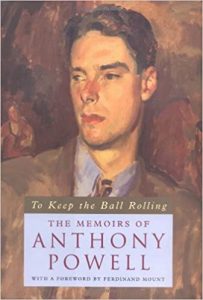
I thoroughly enjoyed this memoir by the author of the wonderful twelve volume novel sequence, A Dance to the Music of Time. I’ve long been drawn to books about the years between the wars, and to writing about the Second World War. Living it vicariously through Powell’s eyes was even more enjoyable because he was a contemporary and friend of writers like George Orwell, Evelyn Waugh, Graham Greene and so many others. Recommended for anyone who enjoyed Dance. Get your copy here.
In travel literature…
Mud and Stars by Sara Wheeler
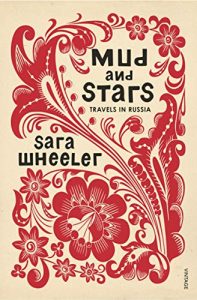
I thoroughly enjoyed this journey through Russia with Sara Wheeler. I liked that she structured the book around the great writers of Russia’s ‘Golden Age’, rather than tying the narrative to her progress on a map. She shares what must have been multiple trips to places associated with each writer’s life and work, shunning the usual accounts of St. Petersburg and Moscow for rural destinations further afield.
These journeys and commentaries are interspersed with the author’s attempts to learn the language, and to whip up edible examples of Russian cooking. It all bakes together and sets into a rich sauce that leaves the reader with a taste of present-day Russia, deeply influenced by the most important flavours of its past.The prose, as always, is impeccable. Get your copy here.
To the Lake: A Balkan Journey of War and Peace by Kapka Kassabova
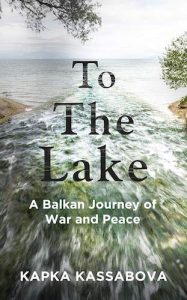
Kassabova’s earlier book, Border, touched on the author’s childhood in Bulgaria. To The Lake takes us deeper as she journeys to her grandmother’s place of origin in the mountainous Macedonian lake district.
The region was once an important nexus of trade between the old Roman world of the Western Empire and its up and coming Byzantine successor. Bisected by the via Egnatia — the Roman road that ran from Adriatic to Aegean, from Illyria to Constantinople — it is also a palimpsest of stories and cultures, religions and ethnicities, great suffering and deep spiritual realization.
The lake has watched it all play out, century after century. It is older than all of us, and it will be there long after we’re gone. Check out the full review on my blog, and get your copy here.
Travels With Myself and Another by Martha Gelhorn
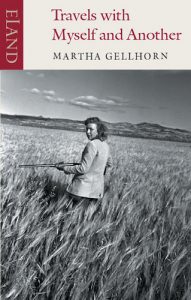
How did I live for 47 years without reading Martha Gellhorn? She covered the Spanish Civil War, went ashore on the beaches of Normandy on June 7, 1944, and wrote about the fighting in Vietnam. But she also wrote about her travels in China, Africa and beyond.
While I don’t envy her the horrors of World War Two, I do envy Gellhorn for living in a sort of golden age of travel. She wrote in a period when travel was cheap, and when it took a long time to get anywhere. It was the age of the great flying boats — the Pan Am Clippers — a time I wish I’d experienced.
My copy is bristling with so many markers it looks like a porcupine in a rage. Check out the full review on my blog, and get your copy here.
Arctic Adventure: My Life in the Frozen North by Peter Freuchen
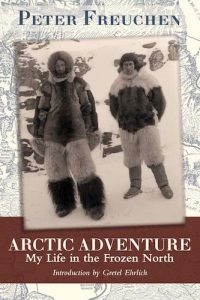
A wonderfully written book about Freuchen’s years in Greenland, where he founded the Thule trading post in 1910 and spent two decades living among, hunting with, and learning from the Inuit. What an incredible life. Get your copy here.
Cut Stones and Crossroads by Ronald Wright
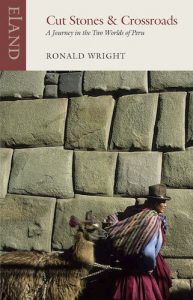
This deeply empathetic book captures the essence of Inca culture as it clung to mountain peaks and terraced fields for century after century, quietly surviving into the present age.
Wright captures those “two worlds” of Peru through the slow-motion clash of two incompatible civilizations: the indigenous Inca and their precursors who mainly inhabit the highlands, and the invading Spaniards who morphed over the centuries into the westernized Latin American elites that dominate the Pacific seaboard and the main cities. Check out the full review on my blog, and get your copy here.
Midnight in Sicily by Graham Robb
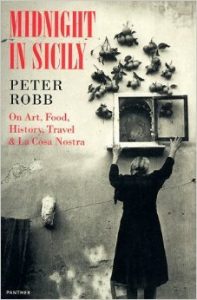
A wonderfully written account of the dark heart of Sicily, its literature, painting, and food — and the inescapable all-pervasive Cosa Nostra. Essential reading on Italy, and not just the country’s south. Get your copy here.
In Xanadu by William Dalrymple
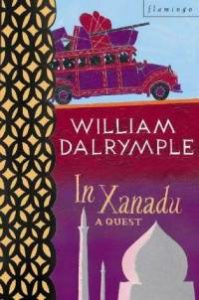
I read this years ago, and picked it up again last October. Xinjiang and Kashgar. The dreaded Taklamakan Desert. Inner Mongolia, and so much more on the trail of Marco Polo. Dalrymple’s first book is even better the second time around. What an astonishing debut it was. Get your copy here.
Dashing for the Post: The Letters of Patrick Leigh Fermor
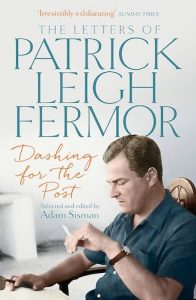
I put this in the travel category because so many of these letters deal with place. Paddy Leigh Fermor was a WWII hero and one of the greatest travel writers of his generation. He was also a spectacularly entertaining letter writer. Thoroughly enjoyable, laugh-out-loud funny, filled with curiosity and love of life. I found it tremendously inspiring. Get your copy here.
In history…..
Black Sea by Neal Ascherson
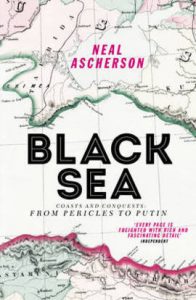
More than just a history of the Black Sea and its shores, this is a meditation on ‘civilization’ and ‘barbarism’, on language and place, on our relationship with the past, and on a unique region of the world where cultures met and sometimes clashed, and where Greeks, Scythians, Samatians, Huns, Goths, Turks, Russians, Ukrainians and Poles lived together in mixed communities for centuries. Get your copy here.
The World of Yesterday by Stefan Zweig
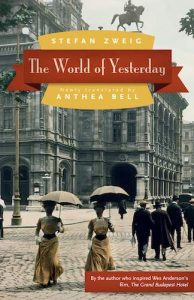
Zweig’s brilliant account of the cosmopolitan life of pre-war Vienna, the turbulent but creative years between the wars, and the rise of Hitler is a mirror of Europe on the brink of catastrophe. It’s a memoir of a vanished age as well as a memoir of the man. Written and published as that world fell apart, it is perhaps the most vivid account of what we lost.
I was surprised by how closely the pre-WWI period of peace, prosperity and progress Zweig described mirrored the post-1989 world we’ve been living in. No one back then could imagine it ending, or imagine it being torn apart. He was among those who missed or ignored the signs in the lead up to 1917, but he saw them so clearly in the lead up to Hitler.
We never seem to learn from history. Periods of peace and prosperity never last. And when those periods span a generation or two where entire lives were lived without experiencing societal collapse, we fall into denial that such things could happen to us. Highly recommended — especially now, with the rise of populism and the collapse of the post-WWII order. Get your copy here.
Summer Before the Dark: Stefan Zweig and Joseph Roth, Ostend 1936 by Volker Weidermann
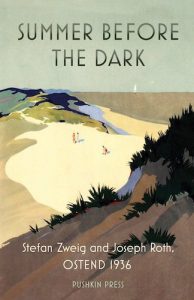
This wonderfully written little book captures Europe on the brink of WWII through the story of a small group of writers who spent the summer of 1936 in Ostend, on the Belgian coast, trying to get on with their work — and to forget they were all on the edge of an abyss. In the end, “The friends never see each other again. Each takes his own road to death. The distance is not long.” Get your copy here.
The Lisbon Route: Entry and Escape in Nazi Europe by Ronald Weber
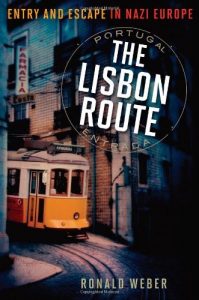
A fascinating read about WWII Lisbon, when the city was a hotbed of spies, smugglers, celebrities, and refugees desperate to take the last PanAm Clipper out of Nazi-occupied Europe in the age of Casablanca. Get your copy here.
The Origins of Totalitarianism by Hannah Arendt
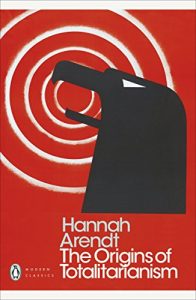
What more can I say about Hannah Arendt’s attempt to understand antisemitism and the Nazi era in the immediate aftermath of the Second World War? Brilliant. Vital. Alarming. Current. This is essential reading for the present time. Get your copy here.
Epic Wanderer: David Thompson and the Mapping of the Canadian West by D’Arcy Jenish
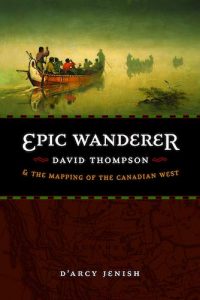
A fascinating book about the life of a foundational — and shamefully forgotten — figure who traded fur for the Hudson’s Bay Company and the Northwest Company, and who surveyed and mapped some 1.2 million square miles of largely unexplored territory between Hudson Bay & Lake Superior and the Pacific Ocean. He did this while traveling by canoe, plotting his latitude and longitude by sextant, and charting his course up rivers with a compass and notebook placed across his knees so he could note each twist and turn.
Thompson explored more territory than the famous Americans Lewis and Clarke. He created an astonishingly accurate map that measured 10 feet by 7 feet, for which he was never paid or recognized. And he died poor, in obscurity, near Montreal. Get your copy here.
In philosophy…
Nietzsche: Philosopher, Psychologist, Antichrist by Walter Kaufmann
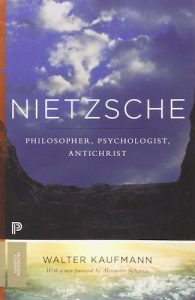
This brilliant book cuts through common misconceptions like a shot of ice cold gin through a muddled mind. My first real immersion into Nietzsche’s writings (after uni) was while huddling alone in an abandoned pumping station in a high pass in the Canadian north, waiting for the weather to break so I could get a helicopter back to semi-civilization, and a clinic for my oozing infected legs. Those were solitary, feverish days well spent reading The Portable Nietzsche. This book is highly recommended for anyone interested in this often maligned, shamefully misappropriated thinker. Get your copy here.
And finally, in fiction…
John Updike’s Rabbit Angstrom novels
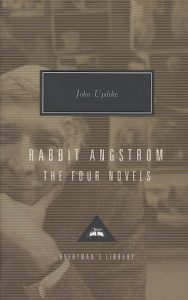
This was the highlight of my fiction reading for 2020. I read the first volume in January, and turned the final page last week.
Updike’s four novel sequence begins towards the end of the Eisenhower era, and he revisits his hero Harry ‘Rabbit’ Angstrom at the end of each decade, putting his finger on the pulse of the culture through the eyes of this flawed but likeable ex high school basketball star.
“Each was composed at the end of a decade and published at the beginning of the next one,” he writes, “they became a kind of running report on the state of my hero and his nation, and their ideal reader became a fellow-American who had read and remembered the previous novels about Rabbit Angstrom.”
Rabbit, Run introduces us to the 26-year old protagonist as he struggles to leave his golden years behind in a 1959 America where happiness is equated with being young. Trapped in a loveless marriage with one child and another on the way, Rabbit attempts to escape his dull home life and even duller sales job.
Rabbit Redux catches up with Harry Angstrom ten years later, at the tail end of the 1960’s, in an America torn by racial strife and the ‘Summer of Love’ protests against the Vietnam War. His life hasn’t gotten any less complicated. It’s often bleak, with the occasionally exasperating need to give Rabbit a good shake, but always engrossing.
Rabbit is Rich checks in on him again in 1979, when our hero is around the same age I am right now. He’s inherited his wife’s father’s Toyota dealership, and the oil shock has made him comfortably wealthy. But he also has a sense of time passing: “What you lose as you age is witnesses,” he says, “the ones that watched from early on and cared, liked your own little grandstand.”
Rabbit at Rest, the final volume, is set in 1989, the tail end of the Regan era, with greed and coke filling the streets, and the USSR about to suffer its inevitable collapse. Rabbit is spending his winters in Florida, golfing and eating far too much fatty, salty food. He’s a heart attack waiting to happen by age 56, and much of the book is a rumination on the increasing debilities of age, and how the world moves on without us.
In the introduction to the omnibus volume, Updike says, “Rather than arrive at a verdict and a directive, I sought to present sides of an unresolvable tension intrinsic to being human.”
Harry Angstrom is still the same flawed character at the end of his story as he was in Rabbit, Run. But I can’t help liking him, and feeling sad to turn the last page. Get your copy here.
The Mimic Men by V.S. Naipaul
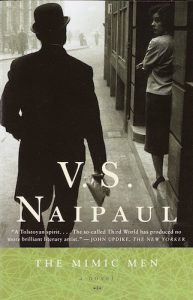
I forgot what a brilliant writer Naipaul was. I found this early novel at a used bookshop in Neukölln. It evokes a colonial man’s experience in a postcolonial world. “We pretend to be real, to be learning, to be preparing ourselves for life, we mimic men of the New World, one unknown corner of it, with all its reminders of the corruption that came so quickly to the new.” Get your copy here.
Beware of Pity by Stefan Zweig
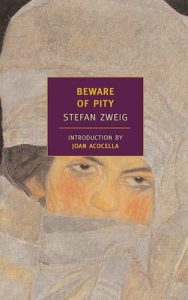
The only novel by the inter-war Austrian writer Stefan Zweig is a glimpse into life in the Austro-Hungarian Empire on the brink of WWI and its own dissolution, and a masterful tale of good intentions gone bad as pity meets desperation in a spiral of guilt and dashed hope. Get your copy here.
So there you have it. My top reads from the past year, narrowed down with great difficulty from a rewarding 12 months of reading. I hope you’ll share it with others who might enjoy these recommendations.
What stood out for you in 2020?
Please share your best reads of last year in the comments below. I’m always looking for new worlds to explore.
